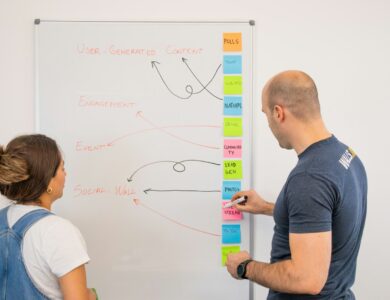
Introduction:
Curiosity is the spark behind every great discovery. It fuels creativity, drives innovation, and keeps the mind active and open. In education, curiosity is more than a motivational tool—it’s a mindset that supports lifelong learning. Yet traditional systems sometimes stifle curiosity through rigid structures, standardized assessments, or fear of failure. To build passionate, autonomous learners, educators must cultivate curiosity intentionally and consistently.
What is Curiosity in Learning?
Curiosity is the internal drive to explore, understand, and question. It motivates learners to seek out new information, experiment, and persist through challenges. Unlike extrinsic motivators like grades or rewards, curiosity originates from within.
Curious learners are more engaged, more creative, and more likely to transfer knowledge across contexts. They are also more resilient, as their motivation is tied to the joy of discovery rather than external validation.
Creating a Curiosity-Driven Environment:
Curiosity thrives in environments where questions are valued more than answers. Here are several ways to design such an environment:
- Start with Questions, Not Answers:
Begin lessons with provocative questions, puzzles, or real-world problems. Instead of “Today we will learn about ecosystems,” try “Why does a rainforest thrive while a desert doesn’t?” These prompts ignite learners’ interest before content is introduced. - Celebrate Inquiry Over Accuracy:
Reward learners for asking thoughtful questions, even if they don’t know the answer. Create a culture where uncertainty is welcomed as a natural part of learning. - Offer Choice and Autonomy:
Let learners choose topics for projects, formats for presentations, or tools for exploring a subject. When people feel ownership over their learning, curiosity naturally increases. - Use Interdisciplinary Approaches:
Combine art with science, history with literature, or technology with ethics. These integrations show learners how diverse subjects connect and invite exploration.
Facilitating Inquiry-Based Learning:
Inquiry-based learning is a strategy that positions curiosity at the center. It involves guiding learners through a cycle of questioning, investigating, reflecting, and presenting findings. Educators act as facilitators rather than content deliverers.
This approach builds critical thinking, research skills, and self-confidence. It also mimics real-world problem-solving, preparing learners for complex and ambiguous situations.
Using Curiosity to Address Learning Gaps:
When learners struggle, curiosity can help. Asking “What part of this is confusing?” or “What would help you understand this better?” invites metacognition. It transforms frustration into a problem to be explored.
Educators can also pose counterintuitive or surprising facts to reignite interest. For example, “Did you know your body has more bacteria than human cells?” can kick off a biology lesson with wonder.
Technology and Curiosity:
Digital tools like virtual field trips, simulations, or interactive databases open new avenues for exploration. However, they must be used thoughtfully. Overuse of passive technology (e.g., watching videos without engagement) can dull curiosity. The goal is to encourage learners to ask, click, try, and reflect.
Challenges to Curiosity:
Barriers include fear of being wrong, pressure to perform, and overemphasis on grades. Educators combat these by normalizing mistakes, focusing on growth, and modeling their own curiosity.
Curiosity can also be cultural. In some environments, questioning authority is discouraged. It’s vital to respect cultural values while still creating space for inquiry.
Conclusion:
Curiosity is the engine of lifelong learning. When educators nurture it, they don’t just teach content—they awaken a desire to explore the world. By designing learning experiences that prioritize wonder, inquiry, and autonomy, we prepare learners not just to succeed, but to keep asking questions long after the lesson ends. In a curious mind, learning never stops.




